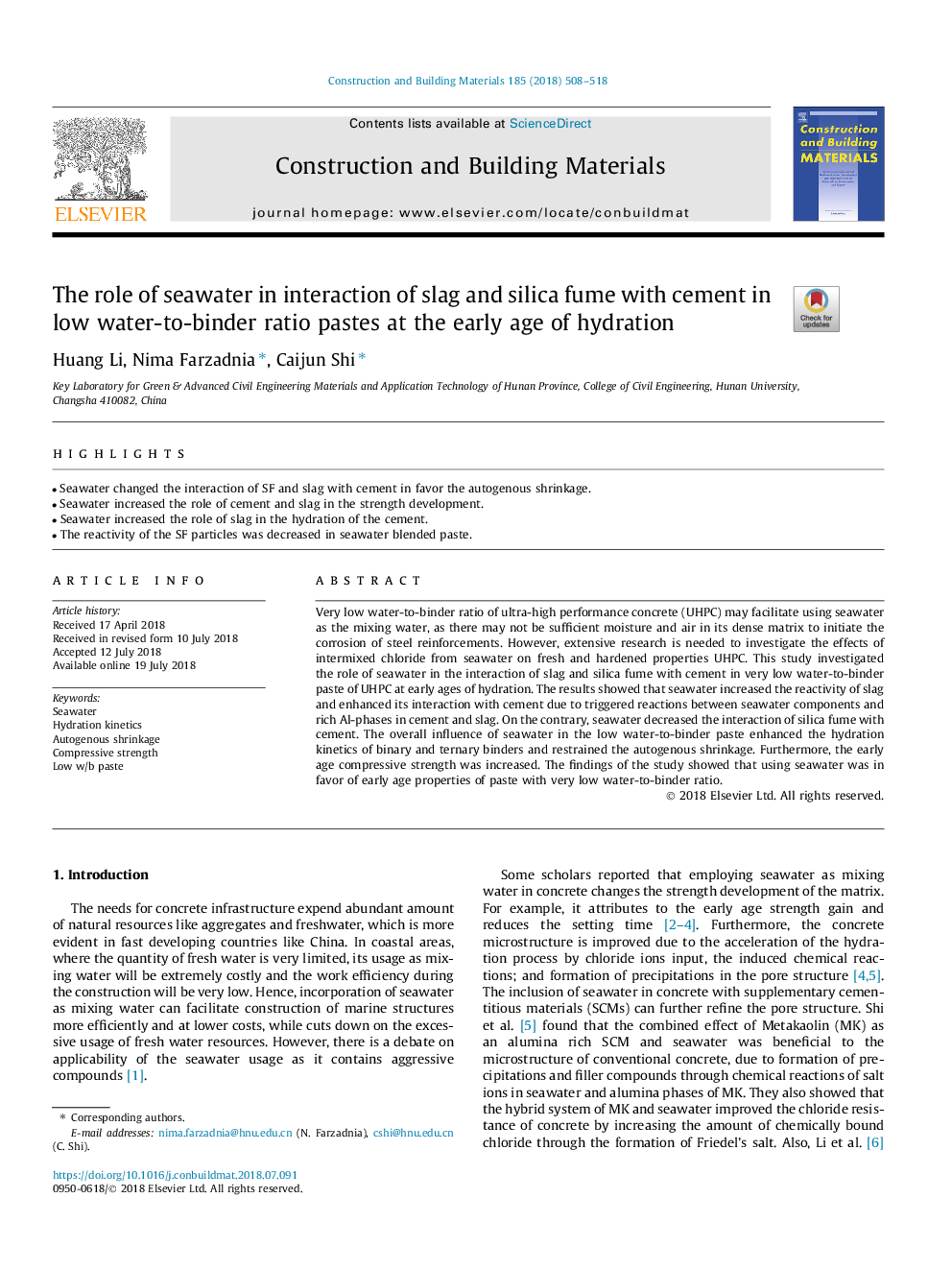| Article ID | Journal | Published Year | Pages | File Type |
|---|---|---|---|---|
| 6711896 | Construction and Building Materials | 2018 | 11 Pages |
Abstract
Very low water-to-binder ratio of ultra-high performance concrete (UHPC) may facilitate using seawater as the mixing water, as there may not be sufficient moisture and air in its dense matrix to initiate the corrosion of steel reinforcements. However, extensive research is needed to investigate the effects of intermixed chloride from seawater on fresh and hardened properties UHPC. This study investigated the role of seawater in the interaction of slag and silica fume with cement in very low water-to-binder paste of UHPC at early ages of hydration. The results showed that seawater increased the reactivity of slag and enhanced its interaction with cement due to triggered reactions between seawater components and rich Al-phases in cement and slag. On the contrary, seawater decreased the interaction of silica fume with cement. The overall influence of seawater in the low water-to-binder paste enhanced the hydration kinetics of binary and ternary binders and restrained the autogenous shrinkage. Furthermore, the early age compressive strength was increased. The findings of the study showed that using seawater was in favor of early age properties of paste with very low water-to-binder ratio.
Related Topics
Physical Sciences and Engineering
Engineering
Civil and Structural Engineering
Authors
Huang Li, Nima Farzadnia, Caijun Shi,
